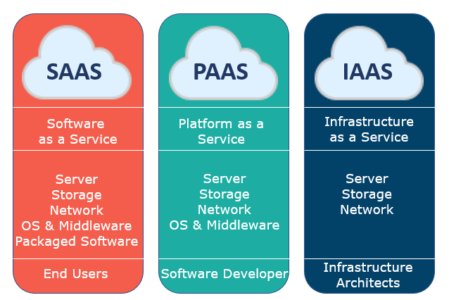Achieve Seamless Scalability With Cloud Services
In the ever-evolving landscape of cloud services, achieving smooth scalability stands as a keystone for modern businesses seeking to remain competitive and versatile. The capacity to easily increase or get resources in reaction to altering demands is a crucial benefit in today's hectic electronic atmosphere. By grasping the art of scalable cloud solutions, organizations can not just enhance performance and simplify operations however additionally pave the way for future development and development. The quest for seamless scalability with cloud solutions reveals a globe of opportunities for those ready to accept the transformative power of dynamic source management.
Advantages of Cloud Scalability
Cloud scalability provides organizations the flexibility to dynamically change sources based on need, ensuring ideal efficiency and price efficiency. Additionally, cloud scalability advertises advancement and testing by permitting companies to quickly check brand-new ideas and scale them as required. Inevitably, the benefits of cloud scalability extend beyond price financial savings to encompass better performance, dexterity, and technology.
Key Functions for Scaling
Efficient scaling in cloud services depends on vital attributes that allow organizations to readjust sources dynamically based on demand. One crucial feature for scaling is flexibility, permitting resources to scale up or down in reaction to varying workloads. This makes sure that companies can meet performance requirements without over-provisioning sources. Another crucial attribute is scalability, allowing systems to take care of boosted work by including resources seamlessly. This attribute is vital for suiting growth without jeopardizing efficiency. In addition, automation plays a vital function in scaling by automating the provisioning and de-provisioning of sources based on predefined plans. Automation lowers human treatment, enhances efficiency, and makes certain rapid response to changing demands. Monitoring and analytics tools are additionally necessary for scaling, providing insights right into source use, performance metrics, and prospective traffic jams. These tools allow organizations to make educated decisions and optimize source appropriation for reliable scaling. In general, these essential features collectively empower organizations to attain smooth scalability in cloud solutions.
Applying Auto-Scaling Strategies
To successfully maximize source allowance and adjust to differing workloads, organizations should tactically execute auto-scaling approaches in their cloud solutions infrastructure. Auto-scaling allows systems to immediately readjust the variety of compute sources based upon real-time need. There are different auto-scaling approaches that organizations can employ, such as predictive scaling, which utilizes historical data to forecast future source demands, and reactive scaling, which reacts to current work modifications.

Ideal Practices for Scalability
For companies intending to enhance their scalability in cloud services, executing finest practices is critical for optimum efficiency and source monitoring. One trick best practice is designing applications with a microservices architecture. This approach breaks down applications right into smaller sized, independent services that can be released, updated, and scaled individually, enabling higher adaptability and scalability.
One more essential technique is using containerization innovation, such as Docker or Kubernetes. Containers allow the packaging of applications and their reliances right into isolated units, making it simpler to scale elements individually and deploy them consistently throughout different settings.
Additionally, carrying out automated deployment and framework as code (IaC) can streamline scalability initiatives (linkdaddy cloud services). Automation devices like Terraform or Ansible help in provisioning and managing sources successfully, reducing hand-operated mistakes and enabling rapid scalability
Additionally, checking performance metrics, establishing up alerts, and conducting normal ability preparation are essential techniques to make sure aggressive scalability monitoring. By sticking to these ideal techniques, companies can attain smooth scalability in their cloud solutions while maximizing performance and source usage.
Surveillance Efficiency Metrics
When assessing the efficiency of cloud services scalability, carefully keeping an eye on performance metrics is vital for guaranteeing optimal functionality and source appropriation. By continuously tracking key performance indicators (KPIs) such as reaction times, resource, throughput, and latency usage, companies can get important insights right into the health and wellness and efficiency of their cloud framework. Keeping track of performance metrics enables the early discovery of possible bottlenecks or issues that could influence scalability, enabling proactive measures to be required to address them before they rise.

Final Thought
In verdict, achieving smooth scalability with cloud services is essential for companies to enhance performance, enhance technology, and maintain high efficiency degrees during peak times. By leveraging the benefits of cloud scalability, carrying out auto-scaling methods, making use of essential features such as elasticity and automation, and adhering to ideal practices like application layout and performance surveillance, companies can efficiently scale their universal cloud Service systems while maximizing source utilization and performance.
The mission for seamless scalability with cloud solutions reveals a world of possibilities for those ready to embrace the transformative power of dynamic resource administration.
Cloud scalability offers companies the flexibility to dynamically change sources based on demand, ensuring ideal performance and expense performance. One more vital attribute is scalability, making it possible for systems to take care of boosted work by including resources flawlessly.For organizations aiming to boost their scalability in cloud solutions, implementing ideal methods is important for optimum performance and resource management.When analyzing the effectiveness of cloud solutions scalability, closely keeping an eye on efficiency metrics is essential for making certain optimal performance and source allocation.